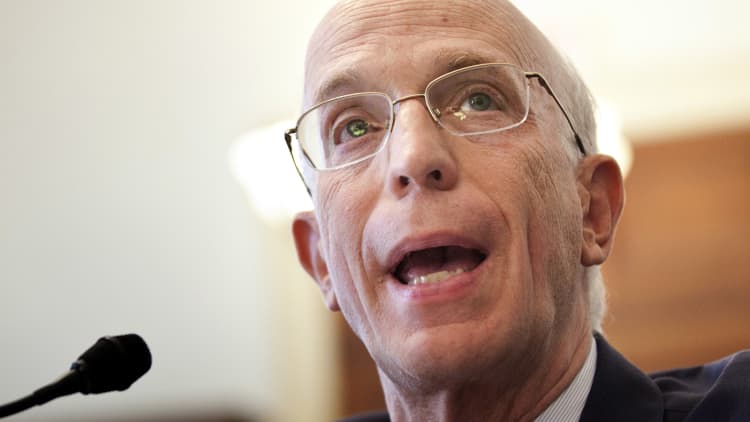Despite the forces seemingly lined up against it, the stock market is getting a positive sign from a historically reliable indicator: high-yield bonds.
The two often have moved in tandem, as strength in the riskiest companies has indicated that the overall state of the equity market is strong. The relationship has broken down a bit over the past few years amid a fluctuating interest rate environment, but has kicked back in during 2020. The S&P 500 is about flat year to date, but up 44% from its March crisis lows; the iShares iBoxx High Yield Corproate Bond ETF is down 3% for the year and up 23% from the March nadir, but has followed a similar trajectory.
One key factor boosting both has been support from the Federal Reserve.
As the coronavirus pandemic unfolded, the Fed took the unprecedented step of buying corproate bonds, including "fallen angels," or lower-grade debt that fell into junk status due to the crisis. While the central bank's purchases have been small so far, they've provided a meaningful backstop to companies that in turn has helped boost share values.
"The fact that the Fed has supported that market and allowed for that market to function is a positive," said Quincy Krosby, chief market strategist at Prudential Financial. "You're allowing companies to be able to enter the market and raise money, and that's crucial."
Indeed, companies at the lowest ends of the credit spectrum have been flocking with debt offerings this year to a welcoming market.
High-yield issuance has totaled $238 billion so far, up 48% from the same period in 2019, according to J.P. Morgan Chase. Not including refinancing, issuance is $101.4 billion, an 81% surge.
The Fed has been a bit player in the corporate bond market, buying up just $2.5 billion worth of individual corporate bonds and another $7 billion in exchange-traded funds that track various indexes. Still, its involvement, and willingness to become a major buyer if need be, has provided major support.
Spreads, or the difference between corporate bond yields and Treasurys of similar duration, have been plunging, down 48 basis points just over the past week. Low spreads indicate that bond holders are demanding less yield for the riskier investments.

The drop in spreads "is certainly notable considering the extended rally in equities and the rising doubts about the ability of equities to stage further gains," Tom Lee, head of research at Fundstrat Global Advisors, said in a note. "We view HY as a virtual leading indicator, and its relative resilience bodes well for further equity gains."
To be sure, the Fed has faced criticism for its unusual market support, particularly about how far out on the risk curve it has extended itself.
In addition to two credit facilities for corporate bonds, the central bank also is buying municipal and other forms of debt and lending to businesses across the size spectrum.
"The fact of the matter is 'there's always assistasnce in every recession. There's always sugar," said Jim Paulsen, chief investment strategist with the Leuthold Group. The Fed's moves "hugely boosted investor confidence and probably CEO confidence and caused them to sell less stocks than they would have otherwise and caused CEOs to hold onto employees longer than they might have."
Paulsen is maintaining his bullish stance on stocks even though the market has had to fend off multiple challenges, most of them virus-related. Cases have spiked in multiple hotspots across the country, unemployment remains high, and this week's report on second-quarter GDP is likely to show a nearly unfathomable annualized decline of close to 35% for the April-to-June period.
Though the Fed's can't keep its thumb on the market scale forever, Paulsen said the confidence it has instilled is getting the market through the present conditions.
"One of the reasons the Fed is doing this isn't so much to provide liquidity, it's to provide confidence," he said. "They're practicing psychology is what they're doing."


